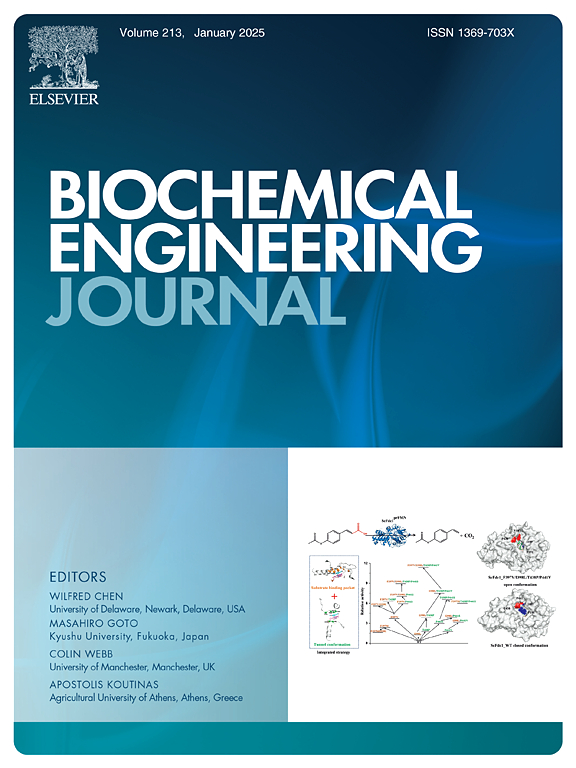Research progress and application prospects of microbial mineralization for repairing cracks in recycled concrete
IF 3.7
3区 生物学
Q2 BIOTECHNOLOGY & APPLIED MICROBIOLOGY
引用次数: 0
Abstract
The accumulation of construction waste imposes a significant burden on the environment. Recycling construction waste into concrete using recycled aggregate has emerged as an effective solution. However, the poor mechanical properties of recycled concrete limit its widespread application. Microbial mineralization-induced calcium carbonate precipitation (MICP) has been proposed as an environmentally friendly repair method to enhance the performance of recycled concrete. Although this technology demonstrates considerable potential, practical applications face several challenges. This paper systematically reviews the key issues in this field and evaluates existing solutions, highlighting their advantages and limitations. The primary challenge is bacterial survival, which has been addressed through two main strategies: (1) enhancing bacterial adaptability via domestication and (2) modifying the external environment by reducing pH and applying protective shells. This dual-protection approach improves bacterial viability and mitigates external environmental interference. The integration of microbial mineralization with recycled concrete is not only environmentally sustainable but also economically advantageous, reducing initial capital investment by 50 % compared to conventional remediation methods while significantly lowering maintenance costs. Additionally, incorporating artificial intelligence into microbial concrete enables real-time monitoring and process optimization, offering an innovative pathway for sustainable construction.
微生物矿化修复再生混凝土裂缝的研究进展及应用前景
建筑垃圾的堆积给环境造成了巨大负担。利用再生骨料将建筑垃圾回收制成混凝土已成为一种有效的解决方案。然而,再生混凝土的机械性能较差,限制了其广泛应用。微生物矿化诱导碳酸钙沉淀(MICP)作为一种环境友好型修复方法被提出来,以提高再生混凝土的性能。虽然这项技术具有相当大的潜力,但实际应用还面临着一些挑战。本文系统回顾了这一领域的关键问题,并评估了现有的解决方案,强调了其优势和局限性。首要的挑战是细菌的存活,主要通过两种策略来解决:(1) 通过驯化提高细菌的适应性;(2) 通过降低 pH 值和使用保护壳来改变外部环境。这种双重保护方法既提高了细菌的生存能力,又减轻了外部环境的干扰。微生物矿化与再生混凝土的结合不仅具有环境可持续性,还具有经济优势,与传统修复方法相比,可减少 50% 的初始资本投资,同时显著降低维护成本。此外,将人工智能融入微生物混凝土还能实现实时监控和流程优化,为可持续建筑提供了一条创新之路。
本文章由计算机程序翻译,如有差异,请以英文原文为准。
求助全文
约1分钟内获得全文
求助全文
来源期刊

Biochemical Engineering Journal
工程技术-工程:化工
CiteScore
7.10
自引率
5.10%
发文量
380
审稿时长
34 days
期刊介绍:
The Biochemical Engineering Journal aims to promote progress in the crucial chemical engineering aspects of the development of biological processes associated with everything from raw materials preparation to product recovery relevant to industries as diverse as medical/healthcare, industrial biotechnology, and environmental biotechnology.
The Journal welcomes full length original research papers, short communications, and review papers* in the following research fields:
Biocatalysis (enzyme or microbial) and biotransformations, including immobilized biocatalyst preparation and kinetics
Biosensors and Biodevices including biofabrication and novel fuel cell development
Bioseparations including scale-up and protein refolding/renaturation
Environmental Bioengineering including bioconversion, bioremediation, and microbial fuel cells
Bioreactor Systems including characterization, optimization and scale-up
Bioresources and Biorefinery Engineering including biomass conversion, biofuels, bioenergy, and optimization
Industrial Biotechnology including specialty chemicals, platform chemicals and neutraceuticals
Biomaterials and Tissue Engineering including bioartificial organs, cell encapsulation, and controlled release
Cell Culture Engineering (plant, animal or insect cells) including viral vectors, monoclonal antibodies, recombinant proteins, vaccines, and secondary metabolites
Cell Therapies and Stem Cells including pluripotent, mesenchymal and hematopoietic stem cells; immunotherapies; tissue-specific differentiation; and cryopreservation
Metabolic Engineering, Systems and Synthetic Biology including OMICS, bioinformatics, in silico biology, and metabolic flux analysis
Protein Engineering including enzyme engineering and directed evolution.
 求助内容:
求助内容: 应助结果提醒方式:
应助结果提醒方式:


